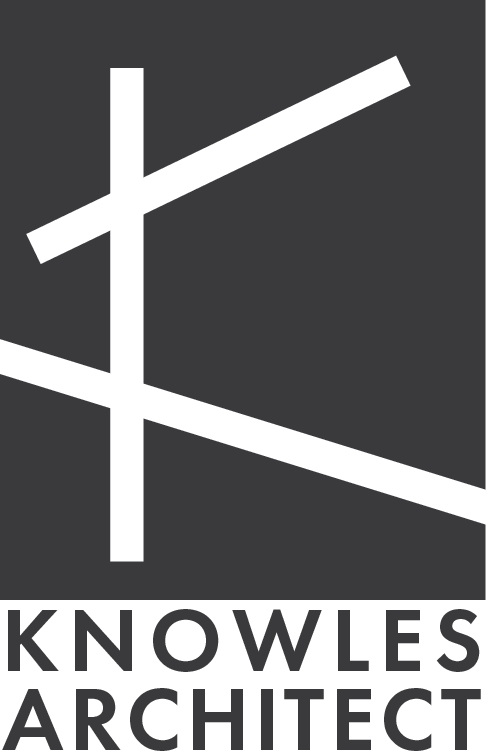
Bales on End Between Studs
How do we take as much carbon as we can out of the atmosphere and sequester it in our buildings? One of the best ways (at about 128-165 kgC02/m3) is to stuff our buildings with locally produced rice straw!
We are working together with our colleagues at CASBA and VSE to advance the methods for streamlining straw bale construction in concert with more conventional building methods. In particular we want to bring strawbale into a modern, place-based design aesthetic that takes advantage of its unitary/modular nature to make beautiful, simple forms.

California Rice Straw
Did you know that straw bale construction is one of the highest carbon-sequestering building techniques in the world, and that California grown rice just happens to make the best straw bales for building?
Straw bale construction improves your immediate place, your neighboring ecosystem, and a local farming community, making it a perfect match for the work of Knowles Architect.

Timeless Materials
So much of Western design culture is based on the foundations of French architecture and design. The timeless, classic materials of limestone and white oak were everywhere. When you are in France, as someone with an American (aka European) education at least, it feels like you really are at the center of the cultural world.
Why do we think of those materials as “classic” and “timeless”? Old buildings are built out of limestone in France because that was and is the workable stone underfoot. The doors are made of white oak because those were and are the dense hardwood trees which grow nearby.
Returning home it felt even more like we lived on the very edge of the planet, on the far rim of a far continent. We rather like that feeling. What would it mean to be “classic” and “timeless” in our “far” country?
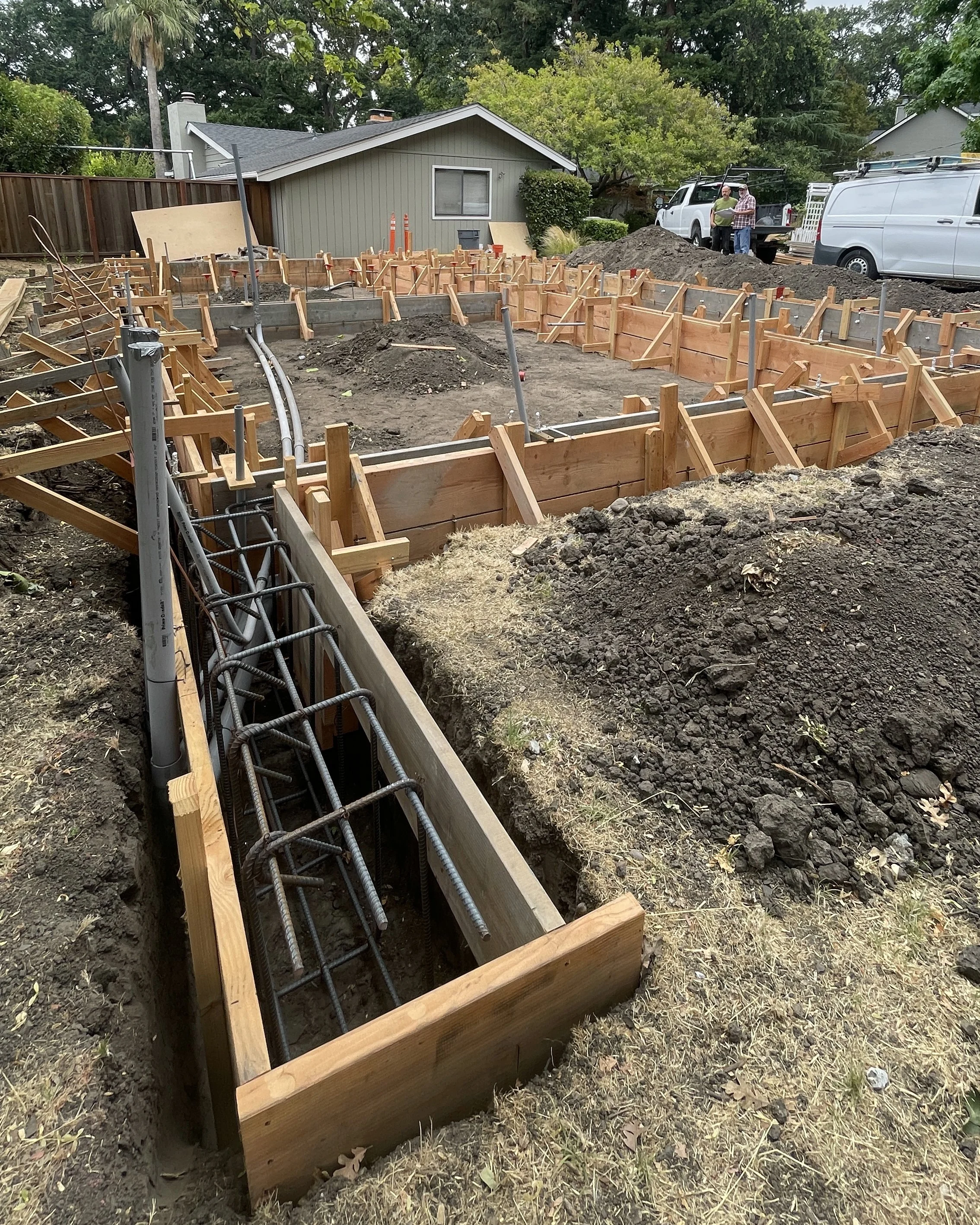
Busy Summer
It’s been a busy year so far working multiple projects through design and permitting, but that’s starting to bear fruit in some very exciting ways!
In July we broke ground on a strawbale ADU (in the front setback!) in Walnut Creek. Really pleased with the way the final material palette has turned out as we wrap up the “For Construction” drawings. Much more coming soon!

2024 in Review
Looking back on 2024, it was full of some really exciting work. I’m so grateful to all of my clients and collaborators for joining me in crafting great places. Here’s to some of these designs getting built in 2025!

Coast Redwood Siding
We recently returned from a week of camping on the Sonoma Coast and relaxing at Sea Ranch. Sea Ranch’s original designers had high aspirations for connecting to the land along the Sonoma coast, and in many ways they succeeded. One of their main responses to place was the prominent use of the defining wood of Northern California: Sequoia sempervirens, the Coast Redwood.

Designed for Gardening
It’s the middle of summer and our vegetable garden at the Middle Creek Bungalow is in full bloom, providing food for our family and a bounty for local pollinators. When you take the time to prepare for it, and the time to notice it, a garden is incredibly full of life. The practice of gardening has much in common with the practice of good architecture, and the pursuit of happiness.

Soil Heath and Zero Foodprint
We have been very busy lately, but I couldn’t let June pass without pausing to reflect on our first official year in business. In celebration of that milestone Knowles Architect Inc contributed 1% of our first year’s revenue to Zero Foodprint and committed to contribute 1% of future revenue to provide grants directly to farmers and ranchers ready to make changes to their land designed to pull carbon out of the atmosphere and re-store it underground as healthy soil.
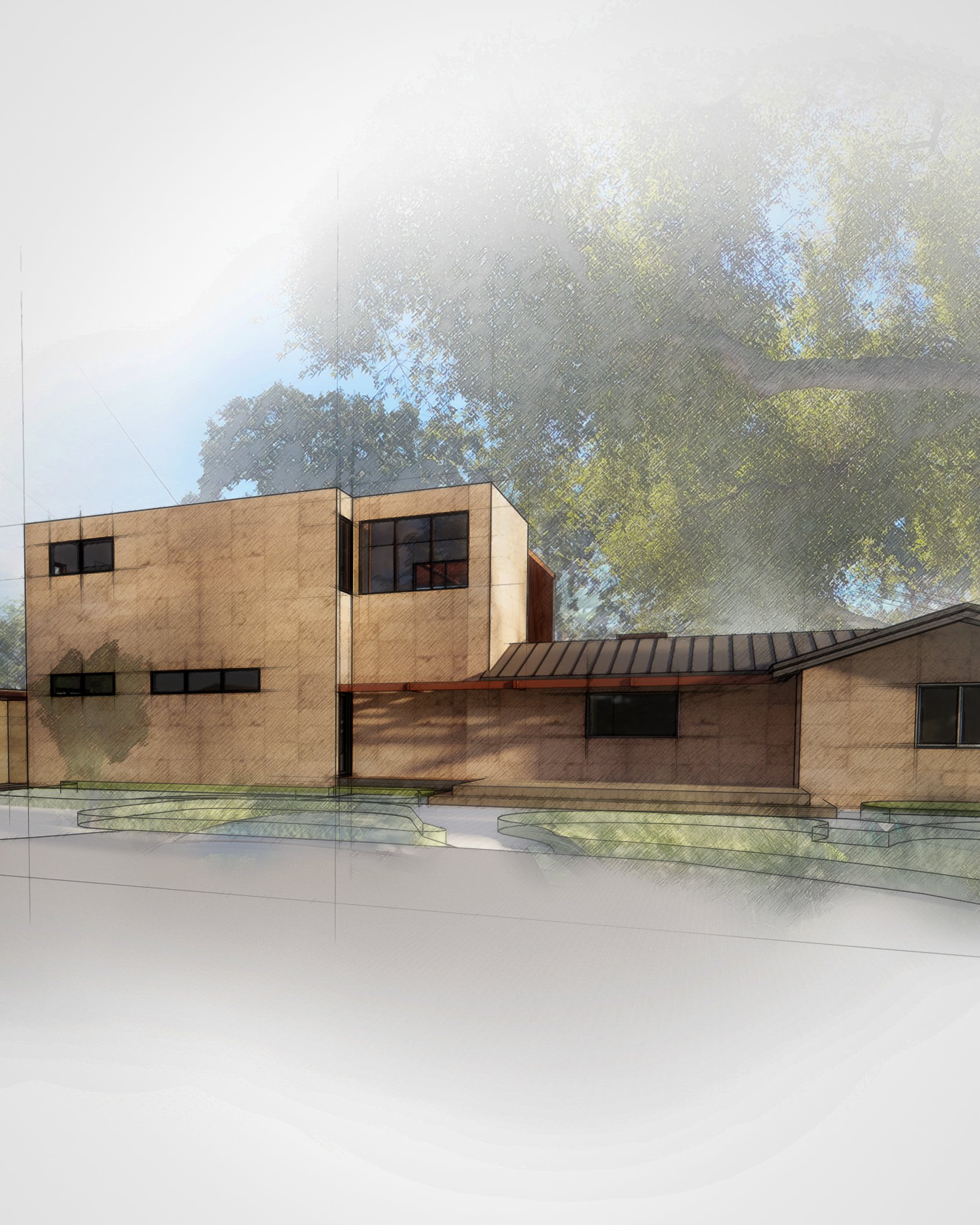
Cork Exterior Cladding
For the Farm-Creek Residence one of the early options we looked at included using compressed cork as an exterior cladding panel. Cork comes from the bark of cork oak trees, native to the Iberian Peninsula, and can be harvested in sections without killing the tree. Most of it is used for wine corks, but a company called Thermacork takes the byproducts from cork stopper production that would otherwise be burnt to make building cladding panels.
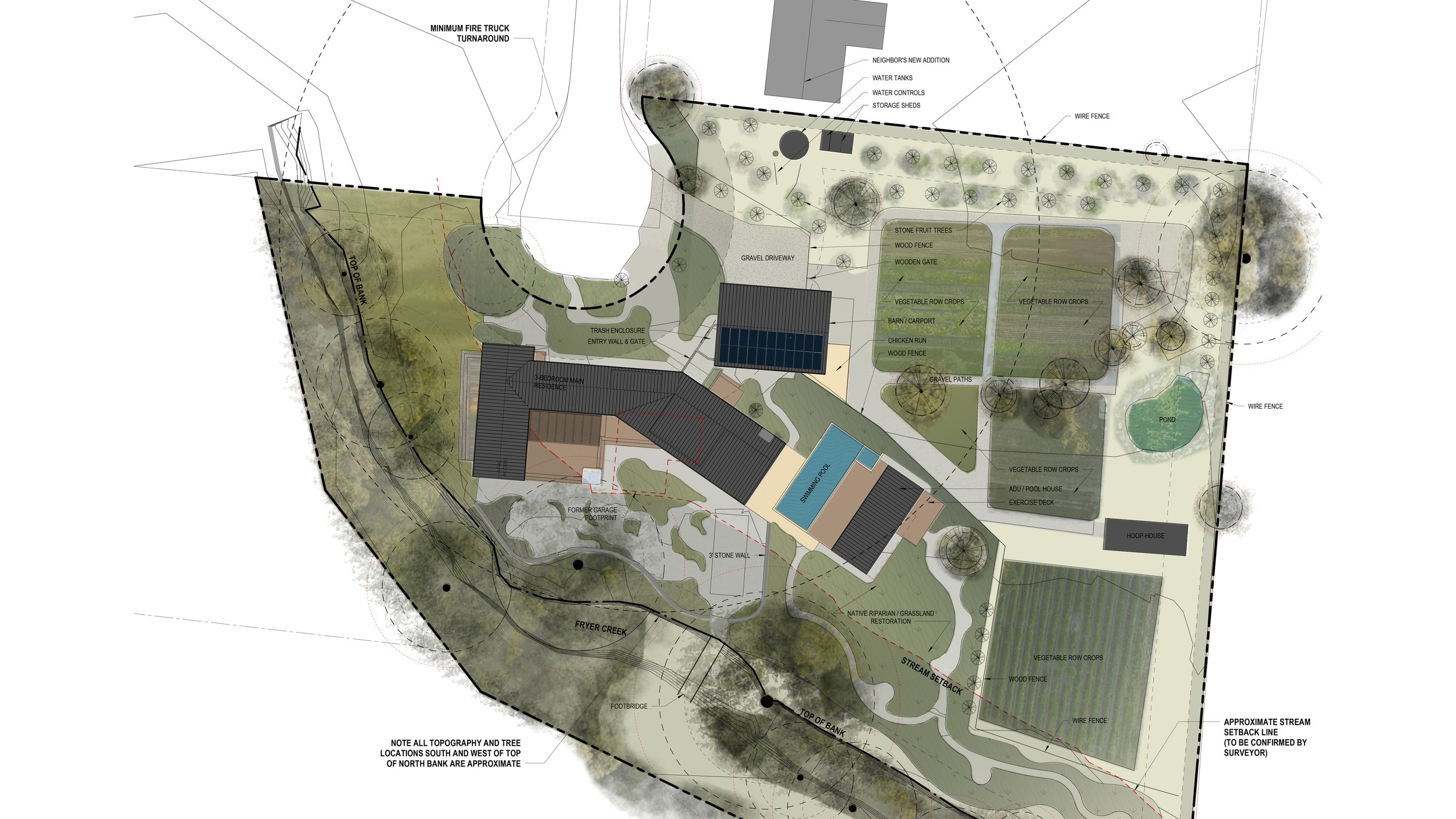
On the Boards: Farm-Creek Site Plan
Our initial phase of design work is based on research, context, and testing ideas with you at the center of the design process. In the case of the Farm-Creek Residence this process is perfectly illustrated by the evolutions of the illustrated site plan from the analysis of the existing site, to the three initial options, through to our current site plan in the middle of Schematic Design. After studying three different initial options we took the best parts of several of them to create a concept for the home which sits comfortably between a restored creek habitat to the south and the working farm to the north. It extends the basic forms of the original house while completely transforming them.

On the Boards: Farm-Creek Renderings
Some projects are just so exciting that we have to share the progress renderings. The Farm-Creek Residence currently in schematic design is one of those. This combination of people and place hits the mark on so many levels: a renovation & addition to create a family’s forever home, on land mostly dedicated to farming which supplies the client’s farm-to-table restaurants with fresh produce, with a blue-line creek lined with heritage oaks running across the southern edge of the property.

Daylight
Many design strategies can help connect you to your place, but one of the most powerful is designing for daylight. Daylight, in all its constantly changing forms, is critical to our wellbeing. Besides the beauty we see in it and the function we gain from a well-lit space, experiencing daylight helps steady our natural circadian rhythms. By gradually changing across the course of the year daylight also grounds our minds in the seasonal rhythms of our local ecosystem.

Neighborhood Context
Becoming native to a place means connecting to the land-community (urban, rural, or something in between) in which we live. There are many ways we affect these connections with architecture, but one of the most obvious is how the building interacts with its neighborhood context through its exterior and entry.

Celebrating Books
Many of our best clients also love books. The books we’ve collected over our lives and the ones we’ve chosen to keep and display, say a lot about us, our history, our hopes, and our values. They are a wonderful thing to celebrate in a design.
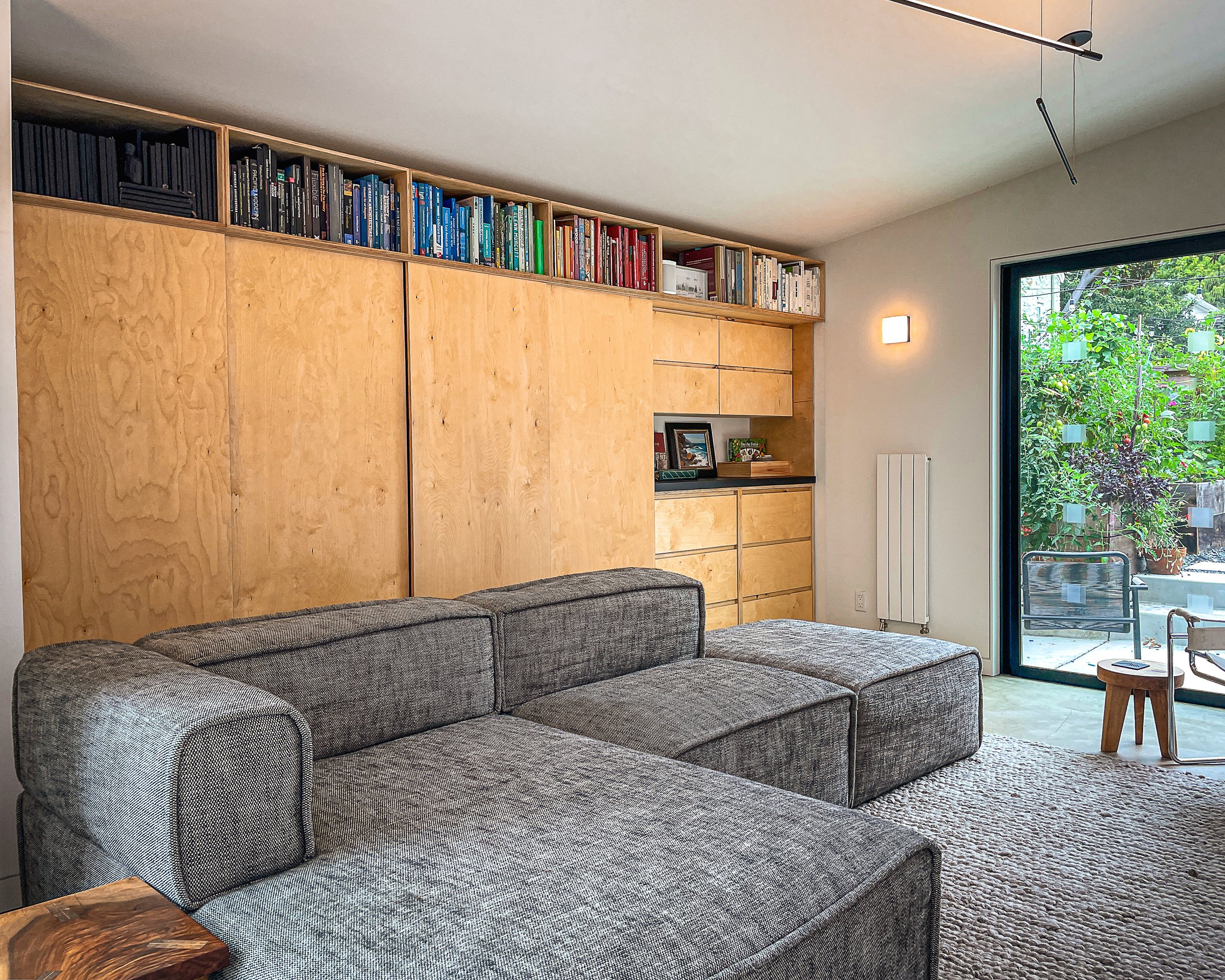
Transformations
The most powerful way to affect the carbon footprint (and the cost) of a project is to reduce the overall square footage. No other single factor will come even close to making the same kind of difference as a reduction in overall size. Often that means getting the same program, the same functionality, out of a smaller, better space through clever design solutions.
One of the best tools is creating multifunctional spaces through transformational elements.
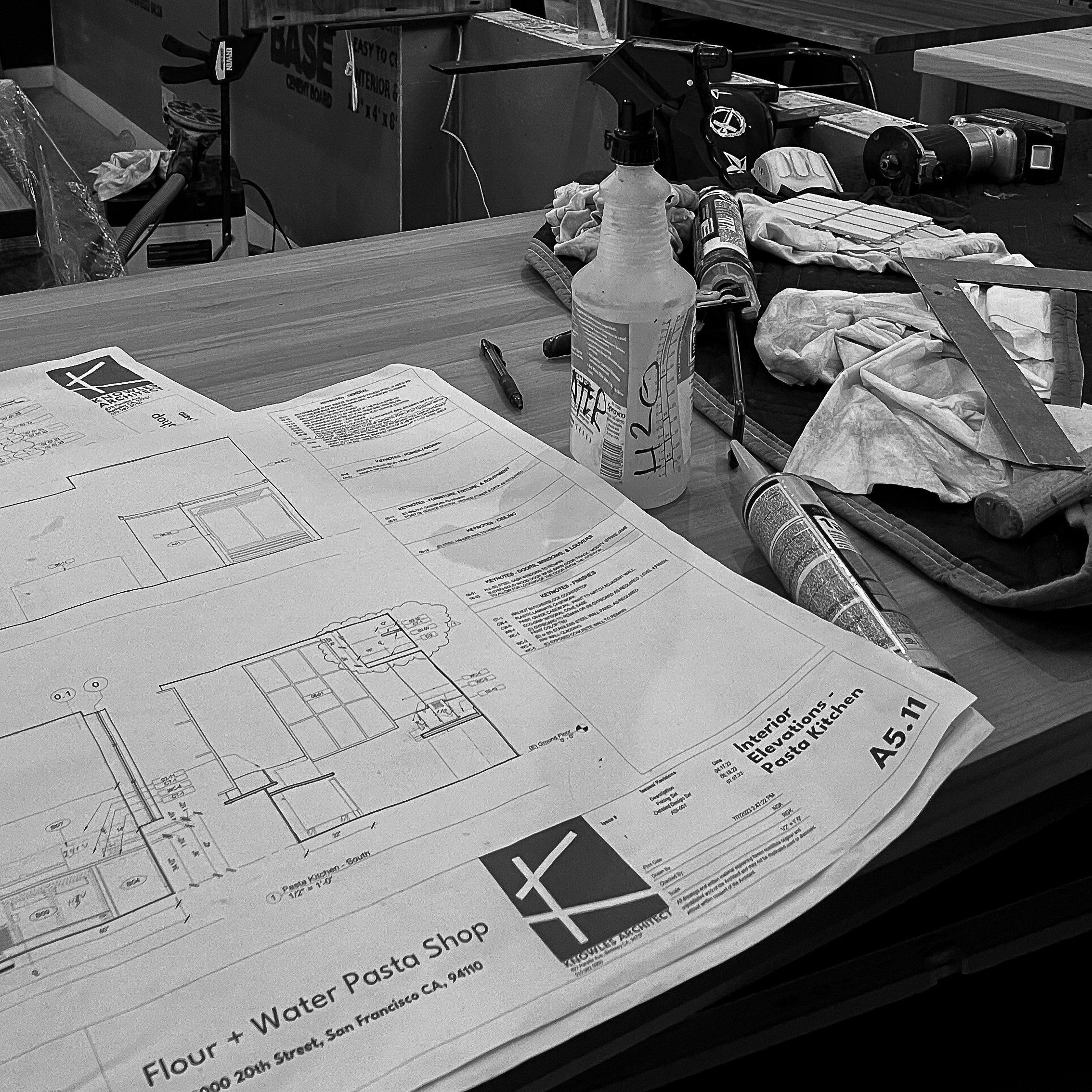
Construction Relationships
Each stage of the design process from the initial concepts through to an inhabited space has its trials and its joys. The most intense part, and by far the most rewarding, happens during construction. This is where ideas and careful research meet reality. This is where things that have been modeled, drawn, and specified go into the minds and hands of the hardworking people who will actually make them a reality.

Three Sections
When we present multiple ideas to a client and discuss what we all like and dislike from each option the most common result is a combination of certain elements from several options. That is often a great solution to the challenges of the project, but it is also very easy for the design to get “muddy” when you start combining elements. For a clear design to come out of that process, each option needs a very clear core idea. That core is almost always a strong idea in section.

Initial Options
When we start to design we try not to come at it with a single pre-conceived idea of what is best for you or your place. After asking a lot of questions of you, and a good amount of research into your site, we sit down to test some ideas. That comes back to you as an initial series of options, none of which are meant to be the final design, but instead are meant to facilitate the start of a conversation. The beginnings of an evolution.
These are 3 options from a current ADU project on the boards. They fostered a great discussion and the project is moving forward with enthusiasm. Want to start your own conversation about your place in the world?
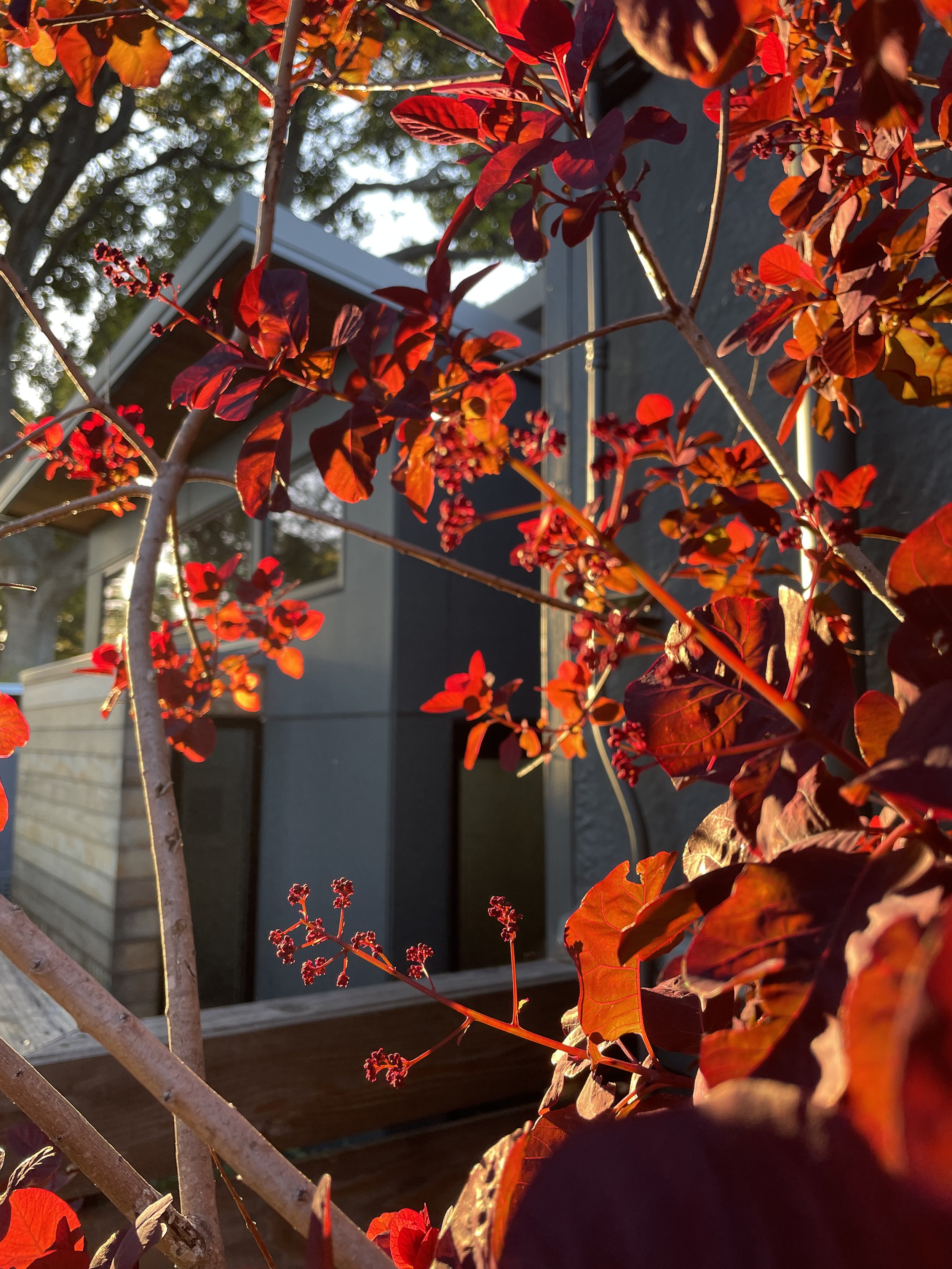
Bonds of Attention
How does architecture connect us to the rhythms of the natural world and the life that it supports? We use architecture, the shape of a space, a view, the way daylight falls on a material, how water flows across a surface, or how a window or door opens to a breeze, to draw our attention to those rhythms of life.

How long to do you plan to stay?
How long do you plan to stay in a place? When we start talking about a project this is one of the first questions we ask because it is so fundamental to the way we approach design. The longer you plan to stay in a place, the more it makes sense to build it well and the greater the harvest you reap from making that place healthier over time.
